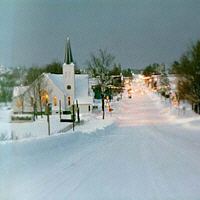Time zone Eastern: UTC-5/-4 Population 6,322 (2013) | Area 9,689 km² Unemployment rate 9.9% (Apr 2015) | |
 | ||
Founded March 9, 1843 set off1848 organized Rivers Presque Isle River, Carp River, Misery River Points of interest Porcupine Mountains, Bond Falls, Lake of the Clouds, Lake of the Clouds Overlook, Bond Falls State Park Destinations Ontonagon, Lake Gogebic, Bergland, Silver City, White Pine | ||
Ontonagon County (/ˌɒntəˈnɑːɡən/ ON-tə-NAH-gən) is a county in the Upper peninsula of the U.S. state of Michigan. As of the 2010 census, the population was 6,780, making it Michigan's third-least populous county. The county seat is Ontonagon. The county was set off in 1843, and organized in 1848. Its territory had been organized as part of Chippewa and Mackinac counties. With increasing population in the area, more counties were organized. After Ontonagon was organized, it was split to create Gogebic County.
Contents
- Map of Ontonagon County MI USA
- Geography
- Geographic features
- Major highways
- Airport
- Adjacent counties
- National protected areas
- Demographics
- Government
- Elected officials
- Village
- Census designated place
- Ghost town
- References
Map of Ontonagon County, MI, USA
The county is named after the Ontonagon River. The name is said to be derived from an Ojibwe language word Nondon-organ, meaning "hunting river." A French transliteration, Nantounagon, identified the river on a 1670 French map. Alternatively, it is said to be derived from the Ojibwa onagon, which means "dish" or "bowl." See List of Michigan county name etymologies.
Geography
According to the U.S. Census Bureau, the county has a total area of 3,741 square miles (9,690 km2), of which 1,311 square miles (3,400 km2) is land and 2,430 square miles (6,300 km2) (65%) is water. It is the third-largest county in Michigan by area.
At a longitude of 89.5°W, it is the westernmost county in the United States contained entirely within the Eastern Time Zone.
Geographic features
Major highways
Airport
Ontonagon County Airport (KOGM) serves the county and surrounding communities.
Adjacent counties
National protected areas
Demographics
The 2010 United States Census indicates Ontonagon County had a population of 6,780. This is a decrease of 1038 people from the 2000 United States Census. This is a -13.3% change in population. In 2010 there were 3,258 households and 1,954 families residing in the county. The population density was 6 people per square mile (2/km²). There were 5,672 housing units at an average density of 4 per square mile (2/km²). 97.3% of the population were White, 1.1% Native American, 0.2% Asian, 0.1% Black or African American, 0.1% of some other race and 1.3% of two or more races. 0.9% were Hispanic or Latino (of any race).
There were 3,258 households out of which 15.8% had children under the age of 18 living with them, 50.3% were married couples living together, 6.0% had a female householder with no husband present, and 40.0% were non-families. 34.8% of all households were made up of individuals and 17.0% had someone living alone who was 65 years of age or older. The average household size was 2.06 and the average family size was 2.61.
In the county, the population was spread out with 15.8% under the age of 18, 4.1% from 18 to 24, 16.7% from 25 to 44, 37.0% from 45 to 64, and 26.3% who were 65 years of age or older. The median age was 52.7 years. The population is 51.6% male and 48.4% female.
The median income for a household in the county was $34,786, and the median income for a family was $46,845. The per capita income for the county was $22,195. About 9.0% of families and 14.3% of the population were below the poverty line, including 22.2% of those under age 18 and 6.7% of those age 65 or over.
Government
The county government operates the jail, maintains rural roads, operates the major local courts, keeps files of deeds and mortgages, maintains vital records, administers public health regulations, and participates with the state in the provision of welfare and other social services. The county board of commissioners controls the budget but has only limited authority to make laws or ordinances. In Michigan, most local government functions — police and fire, building and zoning, tax assessment, street maintenance, etc. — are the responsibility of individual cities and townships.
Elected officials
(information as of June 2013)
